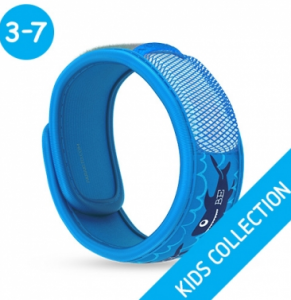The what and how on sunscreen and mosquito repellent use
Written by Sadie Wirthlin
With the summer season in full swing, many people are getting outside and enjoying the heat. Warm weather often calls for pool days and campfire nights. There is a lot to do during this wonderful time of year, but with it comes the responsibility to protect your body from things like sunburn and mosquitos. This protection is especially needed for young children, and recent research provides the best guidelines.
If you are a parent, you may know how important it is to shield your young children from the sun and lather on the sunscreen. There have also been several questions about using bug repellant to protect against the recent warnings against mosquito-borne viruses. While both sunscreen and bug repellant may help provide protection, there is one thing to be cautious about before applying them: chemicals. Young children and babies have more permeable skin than adults, and their bodies may be less equipped to absorb the chemicals found in sunscreen and bug repellent. Dermatologists say that it is definitely important to protect the skin, but parents might want to be aware of how much is being applied. Although more studies need to be done on this topic, here are some of the most recent guidelines.
Babies under 6 months:
The FDA and American Academy of Pediatrics recommend keeping babies that are under 6 months out of the direct sunlight. Use shade, protective clothing and sun hats instead of relying on sunscreen. Babies are also at a higher risk of heat dehydration, so make sure they are getting enough water and wetting their diapers regularly. As far as keeping the bugs away, netting and screens are recommended over insect repellant.
Children 2 and under:
Avoid the peak hours of sun exposure, between 10 a.m. and 2 p.m. Specialists know this is not always ideal, so protective clothing is the first rule of thumb in this age group; the most effective clothes are dark colors and tightly woven fabrics. With mosquitoes, try applying bug repellent on clothing, and use it sparingly. Due to toxicity, buy a repellent that is picaridin-based, avoid eye and mouth contact and wash it off the skin when coming back inside.
Children 2 to 12:
When it comes to sunscreen, know that there is no such thing as “waterproof.” Instead, for children from ages 2 to 12, parents should look for products with 30 SPF or higher and are labeled as “water resistant.” Sunscreens with physical blockers are safer for children because they are less likely to be absorbed through the skin. With this in mind, seek out products with titanium or zinc as the active ingredient. A child’s cupped hand is a good guide for how much sunscreen should be applied, and reapplication should take place every 2 hours. Bug repellent for this age group is the same as children 2 and under.
Product Guide: Mosquito Repellents For Kids
Para Kito makes a wrist band built to hold their mosquito-repelling tablet. The tablet contains a combination of oils including citronella, rosemary, geranium, mint, peppermint and more, all of which are natural bug repellents. Try the version designed specifically for kids (see image).
Sawyer Picaridin (Fisherman’s Formula): $9 for 4 oz.
Honest Co. Bug Spray: $13 for 4 oz.
BabyGanics Shoo Fly Deet Free Bug Spray: $10 for 6 oz.
All Terrain – Kids Herbal Armor: $8.50 for 3 oz.
Make your own: Fill a small bottle with olive oil. Add a few drops of peppermint oil. Shake, and apply to the skin. Some claim that other oils will also work, like lemon, lavender, eucalyptus, thyme, geranium, clove, sage, cinnamon, and rosemary.
Sources: Well.blogs.nytimes.com





No Comment